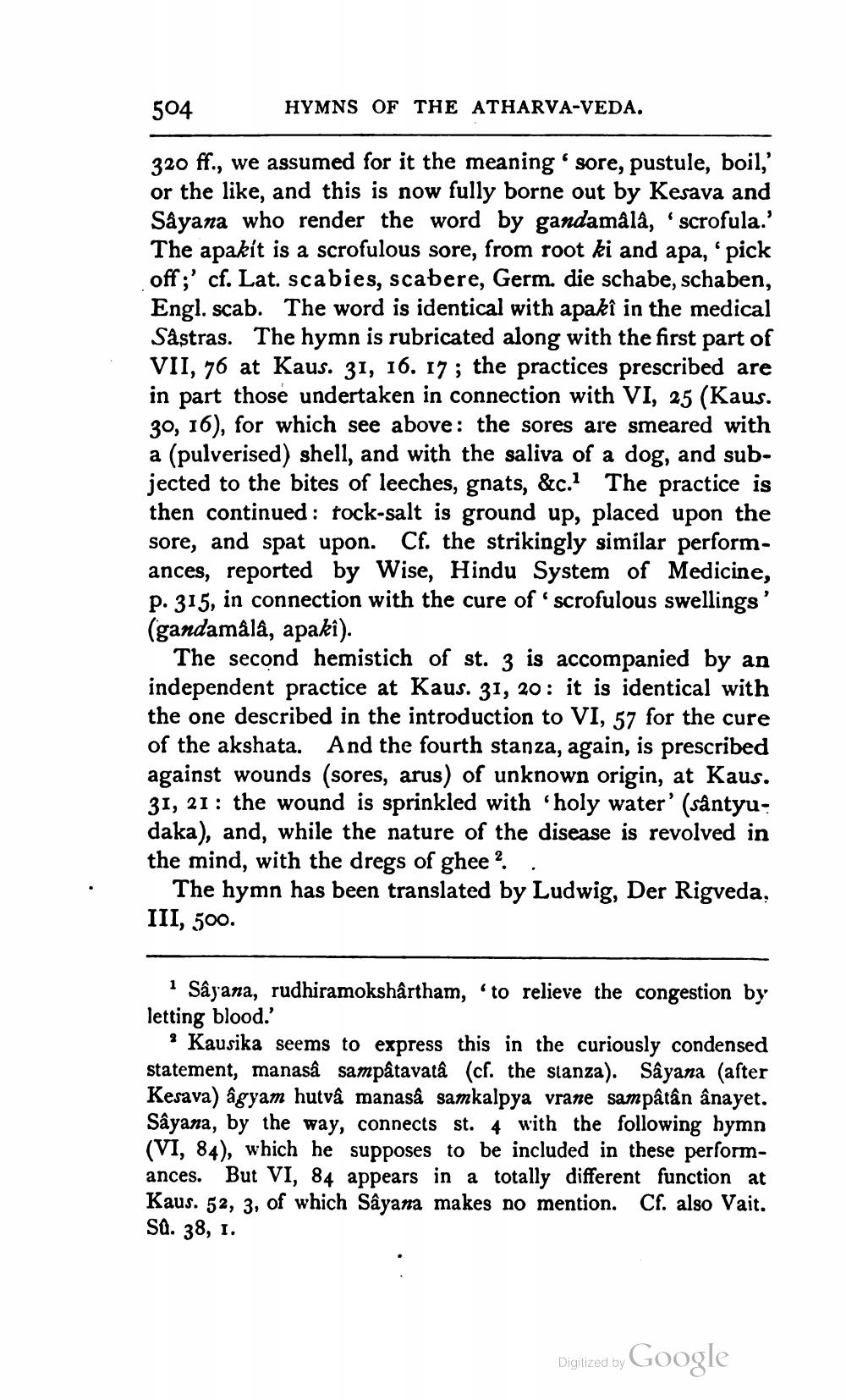________________
504
HYMNS OF THE ATHARVA-VEDA.
320 ff., we assumed for it the meaning sore, pustule, boil,' or the like, and this is now fully borne out by Kesava and Såyana who render the word by gandamålà, 'scrofula.' The apakít is a scrofulous sore, from root ki and apa, 'pick off;' cf. Lat. scabies, scabere, Germ. die schabe, schaben, Engl. scab. The word is identical with apakî in the medical Sastras. The hymn is rubricated along with the first part of VII, 76 at Kaus. 31, 16. 17 ; the practices prescribed are in part those undertaken in connection with VI, 25 (Kaus. 30, 16), for which see above: the sores are smeared with a (pulverised) shell, and with the saliva of a dog, and subjected to the bites of leeches, gnats, &c. The practice is then continued: rock-salt is ground up, placed upon the sore, and spat upon. Cf. the strikingly similar performances, reported by Wise, Hindu System of Medicine, P. 315, in connection with the cure of 'scrofulous swellings' (gandamålâ, apaki).
The second hemistich of st. 3 is accompanied by an independent practice at Kaus. 31, 20: it is identical with the one described in the introduction to VI, 57 for the cure of the akshata. And the fourth stanza, again, is prescribed against wounds (sores, arus) of unknown origin, at Kaus. 31, 21: the wound is sprinkled with "holy water' (såntyudaka), and, while the nature of the disease is revolved in the mind, with the dregs of ghee ?
The hymn has been translated by Ludwig, Der Rigveda, III, 500.
Sâyana, rudhiramokshârtham, to relieve the congestion by letting blood.
Kausika seems to express this in the curiously condensed statement, manasa sampâtavatâ (cf. the stanza). Sâyana (after Kesava) ágyam hutvà manasa samkalpya vrane sampâtân ânayet. Sâyana, by the way, connects st. 4 with the following hymn (VI, 84), which he supposes to be included in these performances. But VI, 84 appears in a totally different function at Kaus. 52, 3, of which Sâyana makes no mention. Cf. also Vait. SQ. 38, 1.
Digized by Google




